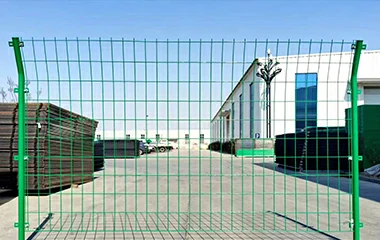When evaluating the cost of chain link sliding gates, it's crucial to consider not only the initial financial outlay but also the installation, maintenance, and durability aspects that influence long-term value. Having managed countless projects and collaborated with industry experts across the globe, I can share a comprehensive analysis that combines real-world experiences and authoritative insights. This provides a trustworthy guide for those seeking to make informed decisions regarding their gating needs.

Chain link sliding gates are particularly popular for both residential and commercial properties due to their balance of cost-effectiveness and security. Yet, the price tag attached to these gates can vary significantly depending on several factors.
Firstly,
the material quality of the chain link itself influences costs. Premium chain links made from galvanized steel are usually more expensive, but they offer superior resistance to rust and weather damage, ensuring longevity. Opting for lesser-quality materials might save money upfront, but could lead to higher costs in the long run due to frequent repairs and replacements.

The size and scope of the gate is another determining factor. A larger, more robust gate with substantial height and width will naturally incur more costs due to the increased material and labor requirements during installation. Additionally, automatic sliding gates with motorized systems are priced higher than manual ones; however, they offer added convenience and enhanced security features that many find worth the investment.
From an installation perspective, geography can influence pricing. In urban areas with a high cost of living, you can expect the installation costs to reflect local market conditions. Conversely, rural areas might offer more economical installation services due to lower operating costs for service providers.
When considering installation, it's imperative to engage with a reputable professional. Poor installation can lead to operational issues, such as misalignment or malfunctioning of the sliding mechanism, which can incur further costs. Hiring professionals with certified expertise ensures the installation meets industry standards, enhancing the durability and functionality of your gate.
chain link sliding gate cost
Maintenance also affects the total cost of ownership. Chain link sliding gates require periodic checks to their sliding mechanisms and hinges, which can accumulate costs over time. However, most quality installations and materials require minimal maintenance—constituting a small price for the peace of mind they provide regarding security.
Looking at the long-term value, economic trends show an increase in demand for secure perimeters around properties. A well-maintained chain link sliding gate not only boosts your property’s security but can also enhance its resale value. When potential buyers assess a property, the presence of a robust security feature like a high-quality chain link sliding gate can be a significant selling point.
In terms of expertise and authoritativeness, market trends suggest a rising preference for customization. Consumers are increasingly favoring gates that not only provide security but also enhance the aesthetic appeal of their property. Custom designs, though on the higher end of the cost spectrum, offer unique styles that can complement the architectural features of the premises.
Finally, to build a trusted stance, always verify the warranty policies of the gate system. Reputable manufacturers provide warranties that cover defects and ensure the longevity of the product. Such guarantees can prevent unforeseen expenses, making them an essential aspect of your purchase decision.
In conclusion, while the initial cost of chain link sliding gates can vary widely based on material quality, size, installation needs, and additional features like automation, the long-term benefits of security, increased property value, and minimal maintenance make them a worthy investment. Making an informed choice requires balancing immediate costs against long-term functional and financial benefits, ensuring that your selected gate meets both current needs and future expectations.
 TEL:
+86-13102802206
TEL:
+86-13102802206
 Email:
fencenetting@china.com
Email:
fencenetting@china.com
 Language
Language
 TEL:
+86-13102802206
TEL:
+86-13102802206
 Email:
fencenetting@china.com
Email:
fencenetting@china.com
 Language
Language



